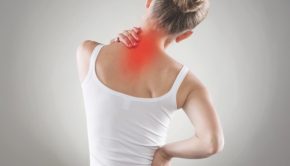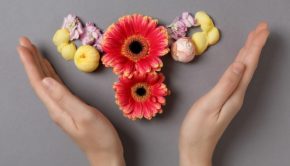Feel-Good Massage
People’s Hands-Down Favorites
According to the American Massage Therapy Association, 53 percent of those that seek out professional massages do it to manage and relieve stress. Healthcare professionals recommend it as a way to support overall well-being, and its popularity continues to grow with some 38 million current U.S. massage enthusiasts.
But which form of massage is best? It depends on our personal preferences as well as which benefits we need, which may change from time to time. Natural Awakenings asked several expert licensed massage therapists to distinguish among the most widely used massage therapies to help us make the right choice.
Swedish Massage
“I’ve always wanted to create a bumper sticker that says, ‘Massage Prevents Road Rage,’” quips Kris Richardson, of Kristine Richardson Massage Therapy, in Sturbridge, Massachusetts. She’s witnessed firsthand how, “Anyone that feels stressed can benefit from a Swedish massage.” During 12 years in the business, she’s helped clients ranging from Navy Seals to athletes from the Admirals professional hockey team, of Norfolk, Virginia, and Brown University’s swim team, in Providence, Rhode Island.
Swedish massage consists of long, gliding, gentle strokes on upper muscle layers, often abetted by kneading, pummeling, brushing and tapping. Swedish massage is especially effective in improving circulation and relaxation; relieving muscle tension and back and neck pain; and decreasing stress. As the lymphatic system is stimulated, oxygen flow to muscles increases, resulting in a relaxed, almost dreamlike state.
Prenatal Swedish massage is also popular among pregnant women. Therapists apply minimal pressure to reduce back pain and to encourage drainage of the excess fluid that may collect in the legs and lower extremities due to edema. It’s important for expectant mothers to find a therapist trained in prenatal massage.
Hot Stone Massage
Hot stones enhance a Swedish or deep tissue massage through strategic placement of heated stones on the body to encourage the exchange of blood and lymph and provide ultimate relaxation of tense, tight muscles. Richardson particularly suggests it to counter “mouse syndrome”—her term for the nagging discomfort people can get from performing repetitive motions at a computer. Typically, the therapist first places a group of preheated stones on stubborn muscles, allowing the heat to penetrate knots, and then uses the stones to further massage muscles back to normal.
Deep Tissue Massage
Nicole Russo, of Evolve Body Therapy Center, in Charlotte, North Carolina, is among America’s corps of therapists whose specialties include deep tissue massage. Nine years in, she has performed massage on sore pro football players with the Tennessee Titans, Cleveland Browns and Pittsburgh Steelers, as well as Cirque du Soleil artists.
The primary goal of this style is to repair injured or overstressed muscles, which also leaves clients feeling better, sounder and more flexible. Russo advises, “Injuries are a result of uneven wear and tear, which results in postural imbalances.” So she applies slow strokes, proven kneading techniques and directed pressure via fingers, thumbs or elbows to work muscles from end-to-end, where they are attached to bones, addressing postural distortions, inflammatory pain and stored emotional tensions to restore muscle health.
Russo says deep tissue massage is usually targeted and intense, but, “It’s a massage that produces lasting results. My clients also often report that they don’t get headaches or backaches anymore.”
Shiatsu Massage
Shiatsu massage is designed to leave a client feeling, “clear, sparkling and ready to do the next thing,” says Dawn Grey Lapierre, of Intuitive Massage Therapy, in Santa Cruz, California. She describes the experience as active, rather than passive. A licensed massage therapist for nearly 20 years, she also incorporates and applies principles of Traditional Chinese Medicine into each session.
For shiatsu massage, the fully clothed client lies on a mat. The therapist will apply pressure from the fingers, knuckles, elbows, knees and feet in a stimulating manner and also move the body into various positions in deep stretching. Shiatsu is used to release tension and strengthen weak areas in order to facilitate even circulation, cleanse cells and improve the function of vital organs.
Lapierre describes the experience as both invigorating and intimate. “I’m moving around on the floor with you, using my knees on the back of your thighs, or my feet on your back. I’m using any part of my body that will be useful in promoting better energy flow along the meridians in your body.”
Shiatsu delivers a vigorous massage; aficionados of more basic styles may graduate to using it.
Thai Massage
Lapierre describes Thai massage as, “partner yoga, during which you’ll get stretched and pulled until I’ve worked every inch of your body.” She likes to focus on acupressure points and kneads sore muscles until energy blockages are cleared and energy flow fully restored.
Thai massage also incorporates gentle rocking motions, rhythmic compression along the body’s energy meridians and passive stretching. It promotes flexibility, inner organ massage, oxygenation of the blood, quieting of the mind and general well-being.
Traditional Thai therapy is performed on a mat using no oils, with the client fully clothed. Thai massage is a favorite among yoga students.
Reflexology
For those new to massage and interested in trying it out, reflexology is a good way to start. Reflexology is performed only on the hands and feet, via finger and thumb massage, with the client fully clothed. It is based on the belief that specific reflex points on the soles of the feet and the palms of the hands correspond with every major organ, gland and area of the body.
Lapierre works reflexology into all of her massages, explaining, “A lot of healing can be accomplished simply through working the hands and feet, because every part the body is mapped out to related pressure points on the hands and feet. Thus, we can clear energy channels and release tension throughout the body just by working these specific points.” Lapierre describes reflexology as calming and soothing.
Reflexology is especially suited for anyone wary about being touched; it is often incorporated with other forms of massage, as well.
Practitioners encourage everyone to find the form of massage that suits them best. “You will surely find one that brings you renewed vitality,” concludes Lapierre. “Massage not only feels good, it’s a good way to increase physical, mental and emotional health by reducing the effects of everyday stress. If you can’t take the day off to unwind, at least find an hour to get a massage.”
Rachel Mork is a freelance copywriter, editor and novelist in Charlotte, NC. Connect at RachelMork.com.




























